24 October 2019, 19:12
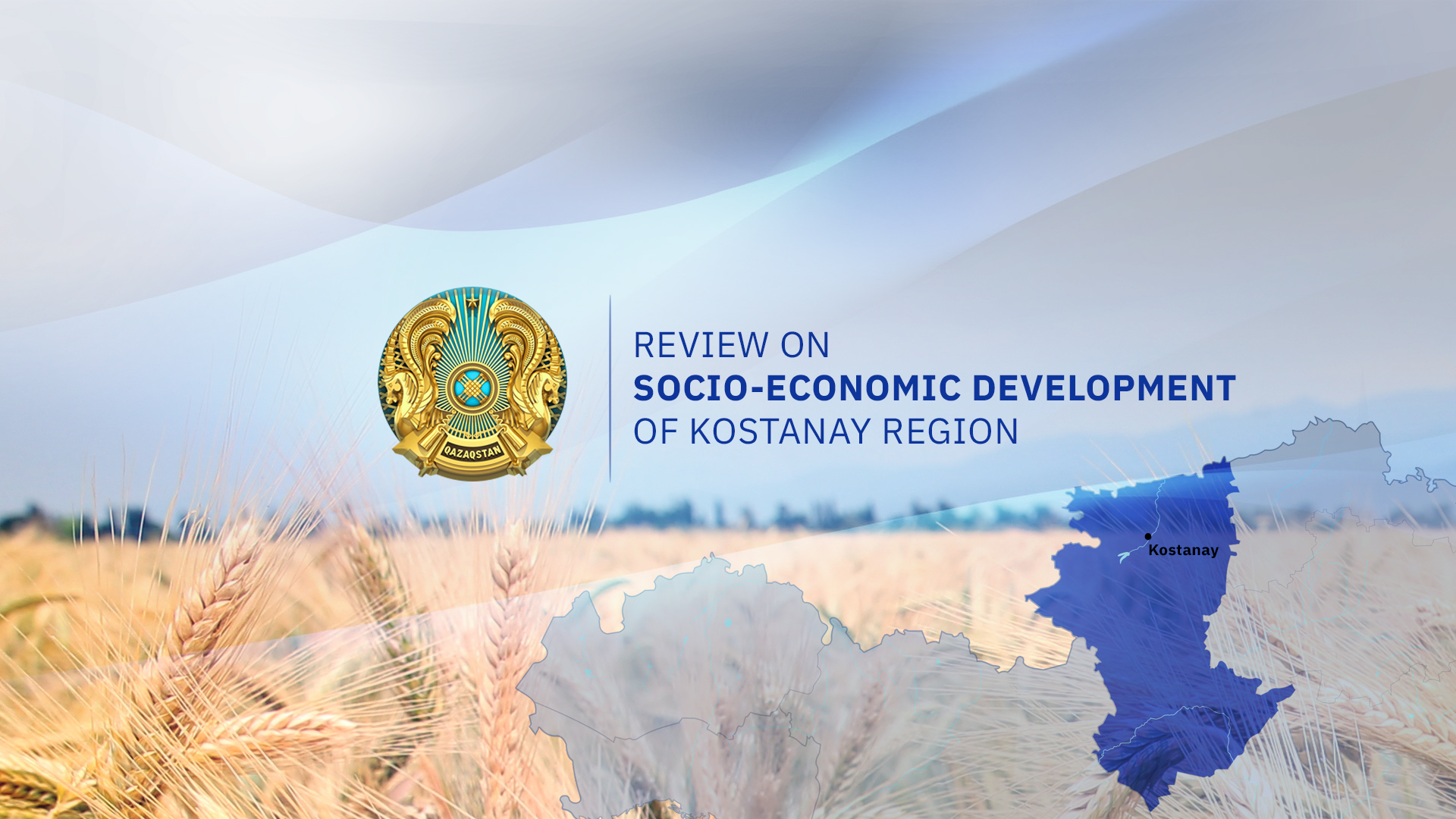
Diversification of the economy initiated by the First President – Elbasy Nursultan Nazarbayev is taking place in Kazakhstan. The Head of State Kassym-Jomart Tokayev supported the course designated by Elbasy. Kostanay region, being an industrial focus of the country, actively implements state programs and makes a great contribution to the development of the socio-economic potential of Kazakhstan. PrimeMinister.kz prepared a detailed report on the development of the region for 9 months of 2019.
Industry, agriculture, tourism, small and medium-sized enterprises are successfully growing in Kostanay region. Since the beginning of the year, positive results have been achieved in all these areas. This is evidenced by the results of the socio-economic development of the region for 9 months of 2019.
Kostanay region is characterized as an industrial-agrarian region. In the structure of the gross regional product, 26.1% is accounted for industry, 10.1% — for agriculture.
As of March 1, 2019, about 700 enterprises with more than 42 thousand employees are engaged in industrial production.
According to the data provided by the akimat of the region, the volume of industrial production for 9 months of 2019 amounted to 862.8 billion tenge. Volumes in the mining industry — 373.4 billion tenge.
In the manufacturing industry, production volumes increased by 23.8% and amounted to 446.6 billion tenge.
The growth was achieved due to an increase in volumes in mechanical engineering by 95.9% (share in processing — 36.4%), metallurgy — by 28.3% (share in processing — 21.6%), as well as in the production of finished metal products, except machinery and equipment, and light industry.
Within the framework of the 2019 Entrepreneurship Support Map, it is planned to implement two projects worth 5 billion tenge:
The mining industry prevails in the region’s production structure, its share is 41.5%. The mining industry includes such enterprises as: JSC Sokolov-Sarbay Mining and Processing Association, JSC Varvarinskoye, JSC Kostanay Minerals, Komarov Mining Enterprise LLP, Lisakovsky branch of Orken LLP, branches of Aluminum of Kazakhstan JSC KBRU and TBRU, LLP Brandt.
The largest mining enterprise in Kazakhstan is the Sokolov-Sarbay Association, the main consumers of products (iron ore concentrate, pellets) of which are Magnitogorsk Iron and Steel Works OJSC, ArcelorMittal Temirtau JSC and Chinese enterprises.
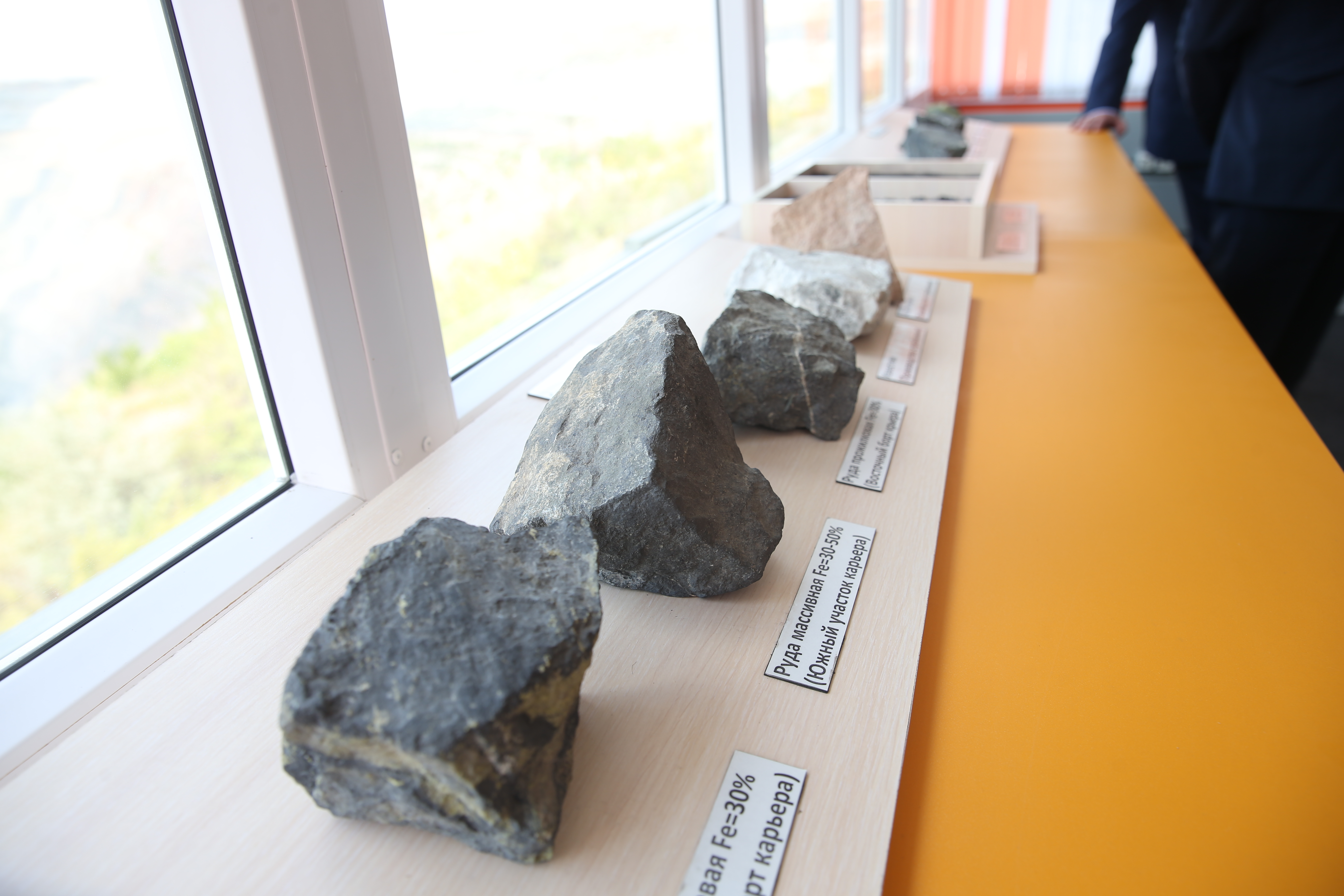
Deposits of gold, copper, titanium, nickel, coal, and lead-zinc ores have been explored in the region. The region is also rich in non-metallic minerals: refractory clays, building stone and sand.
The share of the metallurgical industry in the manufacturing industry of the region in 2018 amounted to 19.8%. The main producers of metallurgical products in the region are EvrazKaspianStal LLP, SSGPO JSC, MehLitKom LLP.
The flagship of the industry is EvrazKaspianStal LLP, which in 2013 implemented the project “Construction of a small-grade rolling mill with a capacity of up to 450 thousand tons of rolled steel per year in Kostanay.” The launch of this plant made it possible to provide the domestic market and construction industry enterprises with quality rental.
The basis of non-ferrous metallurgy is JSC Varvarinskoye, LLP Brandt.
Varvarinskoye JSC is a gold ore-processing enterprise for the production of the Dore alloy.

At a good pace, the machine-building industry is developing in the region, whose share in the total volume of manufacturing industry output at the end of 2018 was 25.2%. The basis of the region’s engineering industry is: SaryarkaAvtoProm LLP, KZ Agromashholding JSC, Olzha Agrotehmash LLP, Dormash LLP, Asmadin Project LLP, Don Mar LLP and others.
The automotive industry of the Kostanay region is not only one of the young industries in the economy of the region and the country as a whole, but also an indicator of the state of development of non-primary production.

SaryarkaAvtoProm LLP, which is part of the Allur Group of Companies, is assembling more than 50 models of cars of 8 brands (Peugeot, Iveco, Hyundai, JAC, Chevrolet Niva, Ravon, MAN, Ankai), the production of which is carried out both by large and small knots assembly. Since 2010, over 29 thousand cars have been assembled on the Kostanay site.
AgromashHolding KZ JSC is the only industrial enterprise in Kazakhstan that produces combine harvesters, as well as additional products in a wide assortment.

Such enterprises as OlzhaAgrotehmash LLP (assembly of tractors, production of spare parts for them and the provision of agricultural machinery repair services), Dormash LLP (manufacturing of spare parts, repair of units and assemblies of agricultural and road equipment), Don Mar LLP (production of trailed gross reapers) provide farmers of the region with agricultural machinery and spare parts for them.
The first Kirovets plant for the production of energy-saturated tractors was built in the Kostanay industrial zone under a program of industrial cooperation. The opening ceremony of the plant with the participation of the Prime Minister Askar Mamin took place Oct. 23, 2019.
The project cost exceeds 7 billion tenge. They plan to produce 500 units of agricultural machinery per year at the new enterprise.
Director of the plant for the production of energy-saturated tractors Kirovets Nikolay Zubarev said that the plant will create 500 jobs. Taking into account the staff involved, up to 700 jobs.
“The localization level will increase to 50%. The engineering staff of the plant is being trained on the conveyors of the Petersburgsky Tractorny Zavod. This tractor is highly demanded. This is the best-selling product of all energy-saturated tractors. It is a market leader. The sales level is above 50%,” said the director of the plant.
Given the high pace of industrial and civil construction, the development of production of building materials plays an important role in the economy of the region. The region produces ready-mixed concrete and concrete products, building sand, reinforcement, pipes from ethylene polymers, prefabricated building structures made of concrete, window and door blocks made of plastic, and brick.
The largest industry representatives are Kostanay MBI LLP, a house-building plant, BK-Stroy LLP, Rudnensky cement plant LLP, Romana Group LLP.
Kostanay-MBI LLP produces all the necessary material for civil, rural and industrial construction. Here they can produce up to 130 thousand cubic meters of concrete and 70 thousand square meters of housing annually. Three-layer panels with flexible connections allow you to build houses without welding, according to the principle of a large designer. Such nine-story buildings appeared in new microdistricts of the regional center.
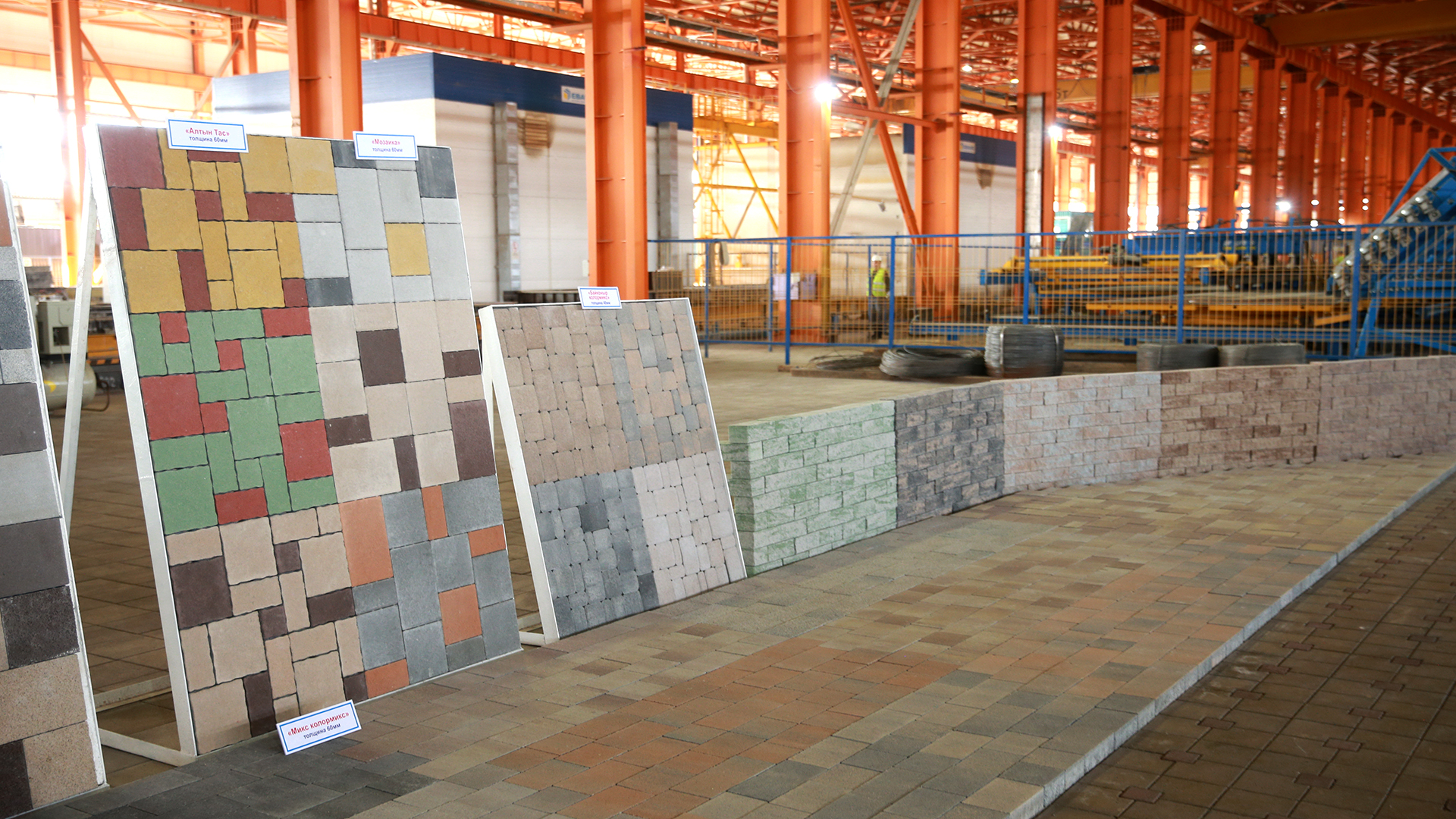
The plant takes part in the implementation of the Nurly Zher State Program. Since 2014, the plant has produced about 35 thousand m² of housing.
Director of the house-building plant of Kostanay MBI LLP Vladimir Annenko informed that the house had been built at the Airport microdistrict. The construction of the house begins in the Yubileiny residential complex. Next year, it is planned to build 12 and 16-story houses in the Bereka microdistricts and five-story houses in the Kunai microdistrict.
“The plant consists of a section for the production of hollow core slabs, a section for the production of wall panels, additional elements and a pallet circulation workshop. Here, a full cycle of reinforced concrete products is made from foundations to floor slabs of houses,” Annenko said.
Light industry is developing at a good pace. The industry is represented by 29 business entities. They produce textiles, clothing, felted shoes, non-woven materials and hats. Last year, products worth more than 2.5 billion tenge were produced. A road map for the development of light industry has been developed in the region.
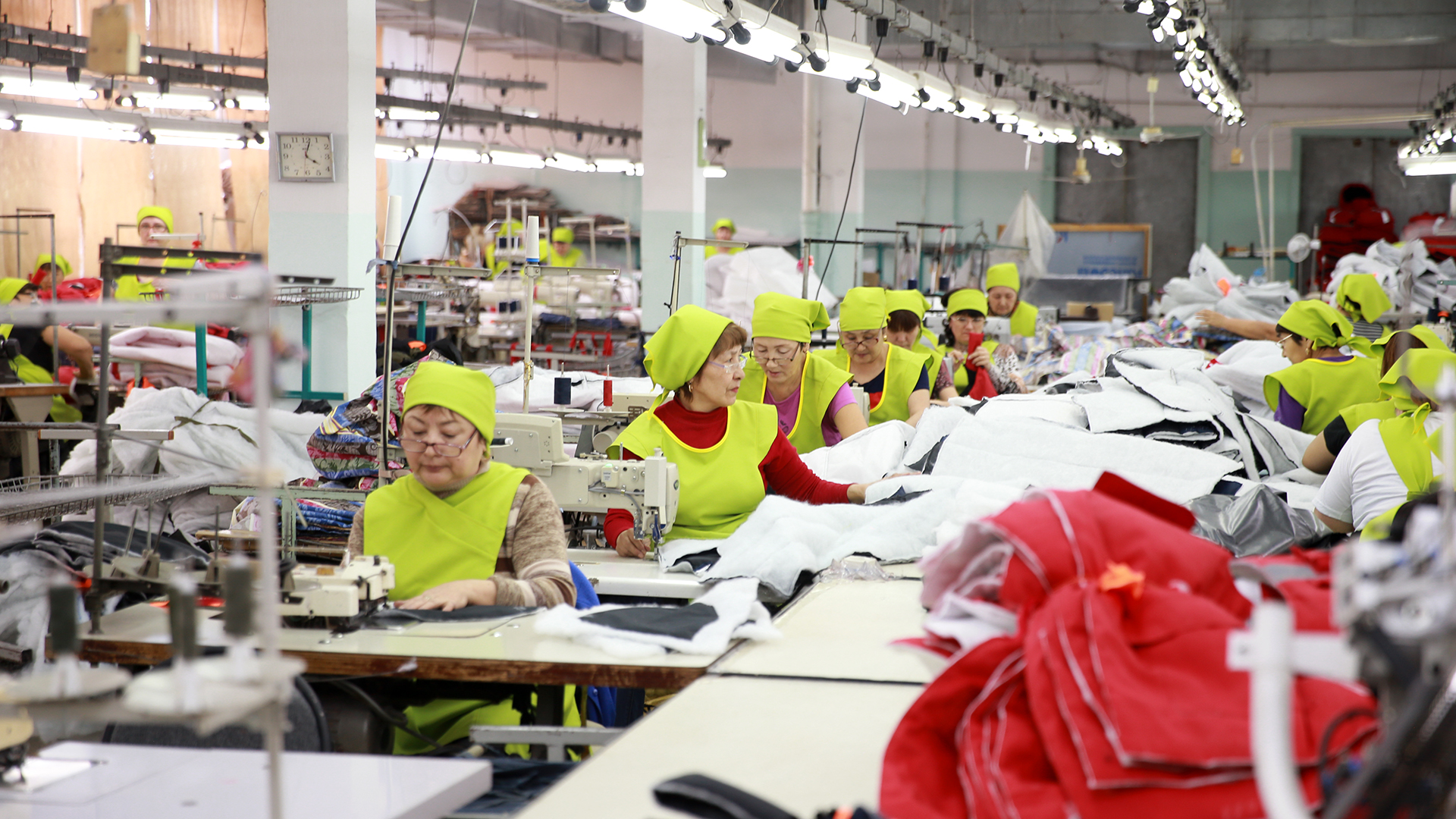
Bolshevichka sewing factory is one of the largest enterprises of light industry in Kazakhstan. Since 1941, the company has specialized in military topics. The main clients are the Ministry of Defense, the National Guard, law enforcement agencies, subsoil users, large industrial enterprises of Kazakhstan. In addition, school uniforms, outerwear and so on are sewn here. Today it produces 88 thousand products a year.
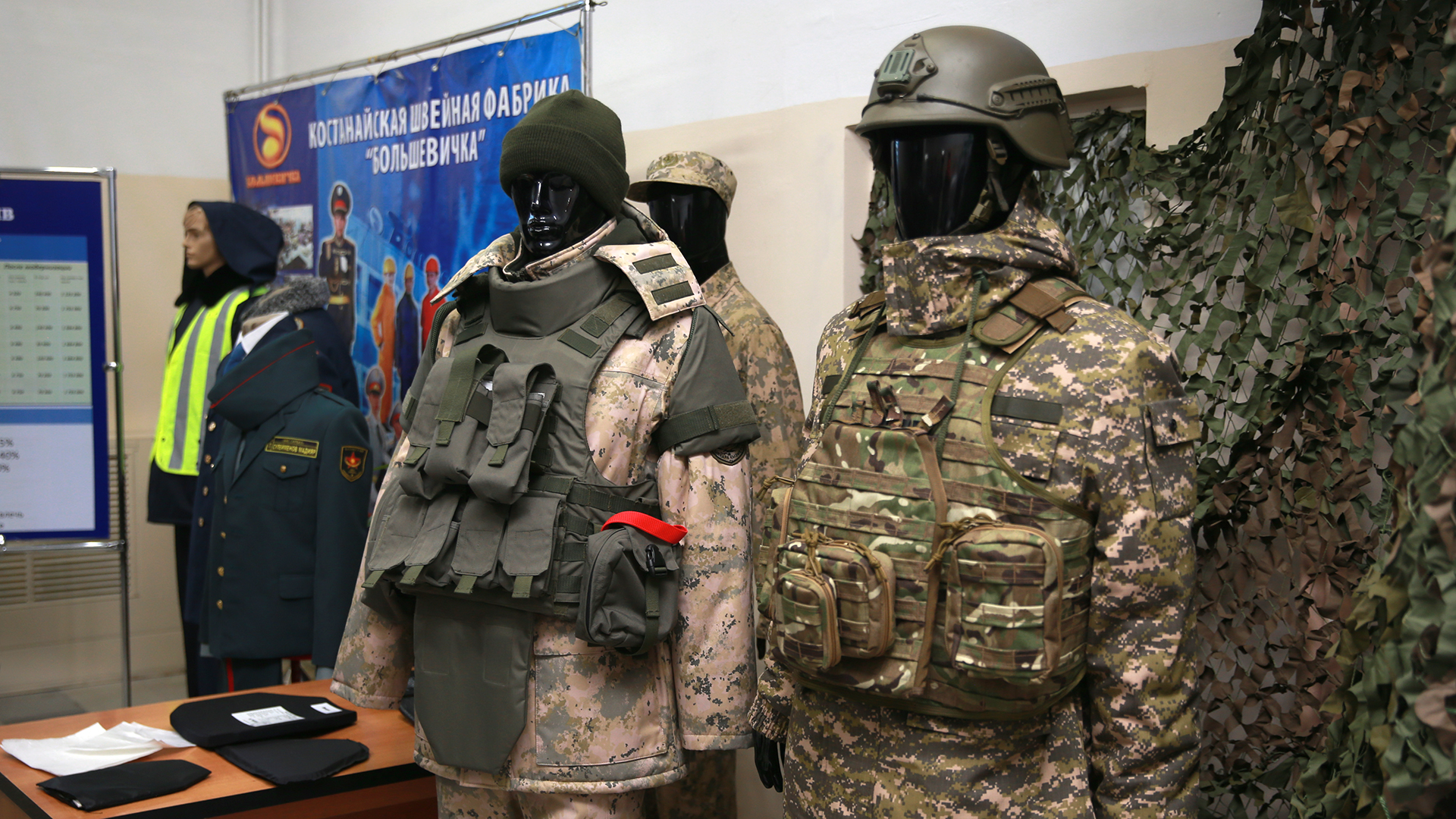
According to the deputy director of the Bolshevichka sewing factory Arsen Zhetpispayev, today the company employs 250 people. The factory actively interacts with educational institutions of the region. Young specialists, as well as the unemployed from the labor exchange, undergo practical training and are employed at the enterprise. The average salary is 90-100 thousand tenge.
“At the moment, we are implementing plans for investment and modernization of the garment factory. We plan to increase the number of staff. We plan to attract additional investments. Within the framework of the Economy of Simple Things program, we plan to attract additional financing, which is necessary for the development of production,” said the deputy director of the factory.
In the overall structure of the manufacturing industry, the share of food production is 31.6%.
As of Oct. 1, 2019, commodity products worth 141.1 billion tenge were produced, which is 3.2% more than the same period in 2018 (136.9 billion tenge).
The processing enterprises of the region produce over 70 types of bakery products, 4-5 varieties of flour from 2 varieties to the Premium class, about 25 types of pasta, over 200 types of dairy and meat products, vegetable oil (sunflower, rapeseed, linseed, safflower, mustard, etc. .), cereals (buckwheat, barley, wheat, pearl barley, red lentils, semolina, corn).
Food industry enterprises produce dairy, flour-grinding, meat products, confectionery, alcoholic and non-alcoholic drinks, and vegetable oil, which are sold both on the territory of our republic and in countries near and far abroad.
According to the results for January-September 2019, the export of agricultural products amounted to 1.2 million tons worth $280 million. The export of processed products amounted to 0.4 million tons to the amount of $110 million.
Meat is exported to the Russian Federation and Uzbekistan, dairy products to Russia, Kyrgyzstan and Tajikistan, vegetable oils to China, Afghanistan, Tajikistan, pasta to Afghanistan, Turkmenistan, Georgia and Russia, flour to 8 countries (mainly Afghanistan, Uzbekistan).
Large flour milling enterprises are Asalia LLP, Salamat LLP, Aruana LLP, Asia Uni LLP, Best Kostanay LLP, Kostanay Flour Mill JSC, Vadisa M LLP, Senate LLP, etc.
Milk processing enterprises — DEP LLP, Milkh LLP, Cosmis Branch RG Brands Kazakhstan LLP, meat processing enterprises Karasu Et LLP, Ayan Ozat LLP, Torgai Et LLP, Irina and K LLP.
Oilseed processing enterprises — Prombaza 7 LLP, K-Oil LLP, Zharkol-007 LLP, etc.
The enterprises for the production of pasta are JSC Kostanay Flour Mill and LLP Zlak Plus.
Cereals production enterprises — Mibeka LLP and Olzha Agro LLP.
The growth of indicators is also noted in agriculture, where the volume of gross output is increased to 248.8 billion tenge.

The number of cattle increased by 2.3% (462.7 thousand), horses — by 6.9% (124.1 thousand), sheep and goats — 2.9% (506.7 thousand).
At the enterprises of the region highly effective innovative digital technologies are being introduced, an intensive updating of equipment is being carried out. In general, further development in the crop and livestock sectors is carried out by continuing to diversify the structure of sown areas, varietal renewal, introducing highly productive varieties, increasing livestock productivity, and improving breeding. All this work is aimed at increasing the efficiency and growth of production, increasing the output of high-quality competitive products that are in demand in the domestic and foreign markets.
According to the Kostanay regional akimat, for 2019 the region, the Ministry of Agriculture of the Republic of Kazakhstan brought the task for the export of beef meat 1,500 tons. As of Oct. 23, 2019, 1,708 tons (114%) of beef meat was exported. 41.1 tons of mutton and 50.8 tons of pork were exported in slaughter weight to the Russian Federation.

This year, the area of spring sowing amounted to 4.7 million hectares. As part of the diversification of the sown area structure, wheat areas were reduced by 198 thousand ha, oilseeds increased to 510 thousand ha, which is 80.5 thousand ha more than the previous year (in 2018 — 429.5 thousand ha ) Feed crops (barley and oats) were sown more than 116 thousand ha, their area amounted to 603 thousand ha (in 2018 — 486.8 thousand ha).

In 2019, 1.5 billion tenge were allocated for subsidizing the development of seed production under the program Support for Seed Production. The number of paid applications for acquired elite seeds and the first reproduction in 2019 is 703 applications (in 2018 — 498 applications).
Harvesting crops in the region is completed. According to operational data, the gross grain harvest is 3 million tons, the average yield in the region amounted to 7.6 c / ha.
As of Oct. 1, 2019, there are 5,081 operating small and medium-sized enterprises in the region, which is 106.7% compared to the same period in 2018. Of these, 7,740 are legal entities of small business, 145 are legal entities of medium business, 41091 are individual entrepreneurs, and 6105 are peasant farms. The largest number of operating SMEs is in Kostanay (25,632), the city of Rudny (6,593), the Kostanay district (3,382), the city of Arkalyk (2,306), the Zhitikarin district (1,940), Lisakovsk city (1,573), Fedorovsky district (1,653).
As of Oct. 1, 2019, within the framework of the Business Road Map 2020 State Program for Business Support and Development, 176 projects worth 8,461.1 million tenge were approved for loans. They include 112 applications for subsidizing interest rates on approved bank loans of 5,845.3 million tenge; for partial guaranteeing of loans — 64 projects for 2,615.8 million tenge.

In the framework of the Fourth Social Initiative, Enhancing Microcredit, in 2018, 1,039 microloans worth 4.3 billion tenge were approved. In 2019, the issuance of microloans continues.
In 2019, 3.3 billion tenge is provided for microcredit, of which 3 billion tenge — for lending in rural areas, 37.1 million tenge — in cities. As of Oct. 1, 2019, 606 microloans worth 2,454.6 million tenge were approved (547 microloans worth 1,866.9 million tenge in rural areas, 59 microloans worth 677.7 million tenge in cities). Financial institutions are considering 48 applications worth 321 million tenge.
Microcrediting in rural areas is carried out through the fund of the Fund for Financial Support of Agriculture JSC and the Atameken Kostanay Microfinance Organization LLP, in cities through second-tier banks funded by the Russian Federation Damu Entrepreneurship Development Fund JSC.
Within the framework of regional programs, 48 microloans in the amount of 299.6 million tenge were approved through the Atameken Kostanay MFI, and 2 projects in the amount of 35 million tenge were approved under the Qos Qoldau program.
As of Sep. 1, 2019, only second-tier banks issued loans to small businesses in the amount of 197.5 billion tenge, which is 21.5% more than in 2018.
The volume of construction work amounted to 85 billion tenge, or 105.7% compared to the corresponding period of 2018. 264.5 thousand square meters were commissioned. m of housing (an increase of 16.2%).
To solve housing issues in the Kostanay region, the implementation of the Nurly Zher State Housing Program and the 7-20-25 Mortgage Housing Lending Program are ongoing. New housing opportunities for every family. ”
In 2019, within the framework of the Nurly Zher Program, 330 thousand square meters will be built in the region m of housing, which is 10% higher than last year (in 2018, 299.3 thousand square meters were commissioned).
For 9 months of 2019, 264.5 thousand square meters were commissioned by all sources of financing. m of housing or 2 825 apartments and houses. The growth in commissioning of housing commissioning over 9 months amounted to 116.2% compared to the same period in 2018. Until the end of this year, at the expense of all sources of financing, about 70 thousand square meters of housing will be introduced.
In addition, in 2019, on the initiative of Elbasy, a new Baqytty Otbasy program was launched with a preferential rate of 2% and an initial payment of 10%.
The Ministry of Industry and Infrastructure Development of the Republic of Kazakhstan brought the forecast loan limit to 1,870 million for 225 applications for lending to low-income families.
To date, Housing Construction Savings Bank JSC accepted for consideration 176 applications worth 1,325.4 million tenge, all applications were approved. 45 loans were issued for 346.6 million tenge (13 large families in the amount of 111.6 million tenge, 28 single-parent families in the amount of 200.4 million tenge, 4 families with disabled children in the amount of 34.6 million tenge).
The road network of regional and district significance of the region is one of the longest in the republic and amounts to 7,879 km (2nd place among the regions of the country), 2,208 km — of the regional, 5,671 km — of district significance.
In total, in 2019, local reconstruction of the highway network carried out reconstruction, overhaul and medium repairs, totaling 14.5 billion tenge, and 514 km of roads were covered by the repair.
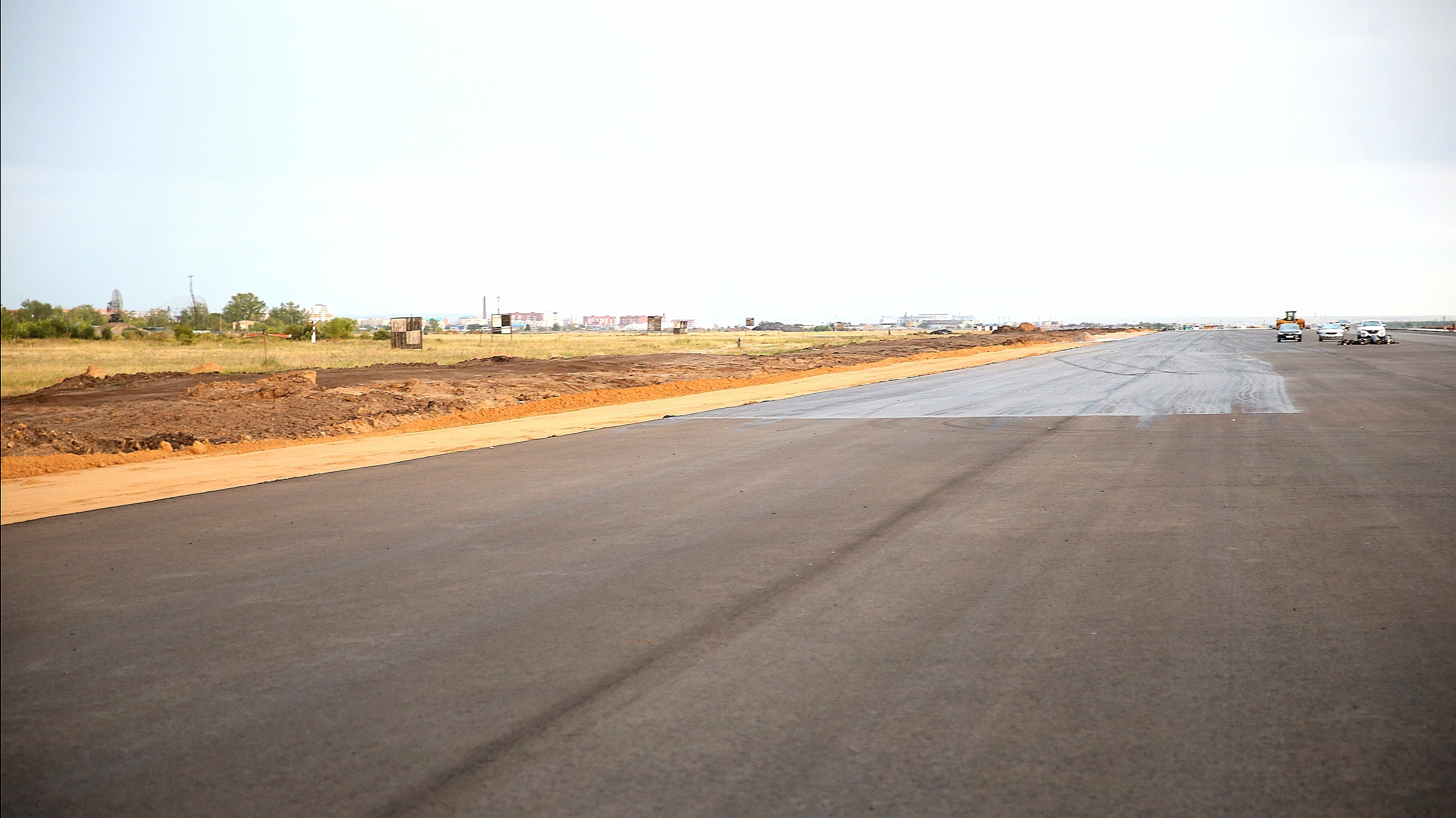
Today, the share of roads in good and satisfactory condition of regional and district significance is 66%. In dynamics, this indicator has annual growth.
As for the projects on which the average repairs are carried out on a parity basis, as of Oct. 23, 2019, out of 40 repair sections of roads of regional and district significance, 508 km long, totaling 13.6 billion tenge, work has already been completed on 38 sites worth 13.3 billion tenge.
Construction and installation work on the average repair is carried out on 2 sections of roads.
Also in 2019, the reconstruction of a section of the regional railway Uzunkol – Sarykol is underway. The implementation of this project began in 2017 and is planned to be completed in 2020.
One of the best in the republic can be called the situation on the labor market of the Kostanay region. It positively reflects the implementation of activities under state programs, regional development programs, and the creation of new jobs.
In the II quarter of this year, compared with the same period in 2017, the unemployment rate decreased by 0.2 percentage points and amounted to 4.7%. The share of unproductively self-employed citizens in the self-employed population decreased by 1.3 percentage points (from 15.9% to 14.6%).
The average monthly salary for January-June 2019 increased by 14.1% and amounted to 136,816 tenge.
One of the key programs in the field of employment is the Enbek Program for Development of Productive Employment and Mass Entrepreneurship for 2017–2021. The main goal of the Program is to promote productive employment and involvement in productive employment.
According to the akimat of the Kostanay region, for 9 months of 2019, more than 21 thousand people were covered by employment measures under the Program, including:
As of October 2019, 2,802 people are studying at the colleges of the region as part of the implementation of the first area of the Enbek Productive Employment and Mass Entrepreneurship Development Program. This year, 21 students completed their studies (majoring in repair and maintenance of automobile transport, locksmith for automobile repair), 18, or 86% were employed.
For the population, a mobile Mobile Training Center operates on the basis of the Kostanay Industrial Pedagogical College, on the basis of which 328 students from 5 professions have been trained since 2017. Until the end of this month, 23 more people will be trained.
Health sector is also showing good results.
For example, in the framework of the implementation of the Digital Kazakhstan state program, phased work was carried out in all medical organizations of the region to implement the DamuMed comprehensive medical information system, paperless medical records were introduced in 43 medical organizations of the region (which is 100% of the plan).
In 2018, 469 million tenge was allocated from the regional budget for the purchase of computer equipment and providing access to the Internet. As a result, access to the Internet by healthcare organizations amounted to 95.8%, and equipping with computer equipment — 100%.
Of the 873,163 population of the region, 770,618 outpatient cards, or 89%, were digitized according to the register of attached population.
Coverage with mobile applications is 118,209 people, or 24.11% of the active Internet population (490,297 people).
All medical workers received training in working with the medical information system.
Digital aid posts have been organized in 26 (100%) organizations providing primary health care, where patients can familiarize themselves with the use of the mobile application and the patient’s personal account.
The outreach of the adult population participating in the meetings is 97.5%.
In order to popularize the digitalization of the healthcare sector, the provision of public services, informational and explanatory work is regularly carried out in the media, social networks, through outdoor advertising, and informational brochures and booklets are being replicated.
From July 1, 2017 to Sep. 30, 2019, the receipt of contributions and deductions for compulsory medical insurance in the republic amounted to 214.5 billion tenge. Of these, from payers of the Kostanay region — 8.8 billion tenge (4.2%) for 346,215 people.
In 2019, 81.5 billion tenge arrived In the republic, including in the Kostanai region — 3.3 billion tenge for 259,760 people.
This year, an increase in the number of participants in the medical insurance system has been observed, primarily due to the payers of the Unified Aggregate Payment. As of Oct. 1, 2019, 5,070 people paid the UAP.
In 2019, the branch of the fund concluded agreements with 61 medical organizations, 19 of which are private or 31%. The total amount of contracts for the provision of services to the population within the guaranteed volume of medical care in 2019 is 40.9 billion tenge.
As of Oct. 1, 27.6 billion tenge or 67% of the amount of concluded contracts for the provision of medical care under the guaranteed volume of medical care was paid to the Fund’s suppliers. The allocated amounts are sufficient to cover the operating expenses of medical organizations.
With the introduction of the Social Insurance system in 2020, health financing in the region is expected to increase by 1.3 times compared to 2019.
As of Aug. 1, according to statistics, 870,231 people live in the Kostanay region. According to the medical information system Register of the Attached Population, there are 20,749 people in excess of the total number of inhabitants (as of 30.08.2019 — 28,300 people).
Currently, work is underway to update the data in the system (departed, deceased, etc.).
Information work in the region began in late 2016. The Headquarters continues to work on the implementation of social insurance, the chairman of which is the akim of the region.
Methodological materials have been brought to the information groups of medical organizations, taking into account the amendments to legislative acts, they also inform residents in subordinate areas.
Audio clips are shown at 100 crowded sites, LED monitors located in central squares, work has been done in 4 cities in the region to provide materials for printing data on paper receipts for utility bills, billboards are being placed in accordance with the Law on State procurement.
In order to cover all categories of the population, meetings were held in each rural district. Promotions are regularly held at shopping and entertainment centers, auto and railway stations. Meetings were held with representatives of small and medium-sized businesses, limited liability partnerships, individual entrepreneurs, and budget organizations. Work continues at population counseling centers in public service centers, employment centers and the public reception party Nur Otan.
Preschool upbringing and education covers 91.2% of children aged 1-6 years, 99.7% — aged 3-6 years. With the dominance of state preschool organizations, the non-state sector is expanding - more than 11%.
Sep. 1, 2019, in the village of Karasu, a Nursubi kindergarten for 96 children was put into operation, and 1 public-private partnership agreement was signed (reconstruction of the building for a nursery garden with 265 children in Rudny).
The educational network of the region includes 1,209 organizations (183 kindergartens, 60 of them private; 407 mini-centers, 12 of them private; 502 day-time, 5 of them private, and 6 evening schools, 35 colleges (26 state educational departments, 2 public health departments and 7 private), 21 organizations of special education, 9 organizations for orphans and children without parental care, 1 center for adaptation of minors, 45 organizations of additional education).
To date, schools with three-shift training in the Kostanay region are absent.
In order to eliminate the three-shift training, this year a secondary school with 900 places was commissioned in the airport microdistrict of Kostanay. In addition, in November 2019, a school for 960 places with the state language of instruction will be opened in the regional center.
Also, in Kostanay, construction of a school for 1,200 places in the Yubileiny microdistrict with a total value of 3.2 billion tenge has begun. In 2019, 1 billion tenge was allocated from the republican budget for the initial stage, the completion date is August 2021.
In the village of Amankaragai in the Auliekol district, instead of the emergency, construction of a new school for 320 seats with the state language of instruction at a total cost of 1.2 billion tenge was started. Construction is scheduled for completion in June 2020.
In 2018, in the framework of the Digital Kazakhstan State Program, Ozat IT-lyceum-boarding school was opened in the region, as well as an IT center at the Kostanay Industrial and Pedagogical College.
All 497 schools (100%) have broadband internet access, including 441 schools (88.7%) have high-speed Internet from 4 Mbps, 447 schools are equipped with Wi-Fi networks (89.9%). The system coverage of filing applications and priority in kindergartens and first grades is 100%.
Kostanay region has a rich potential of natural and cultural heritage. Tourism in the Kostanay region is seen as an industry that can create a multiplier effect in the development of the regional hospitality industry, and in some territories it can become the basis of plans for socio-economic development.
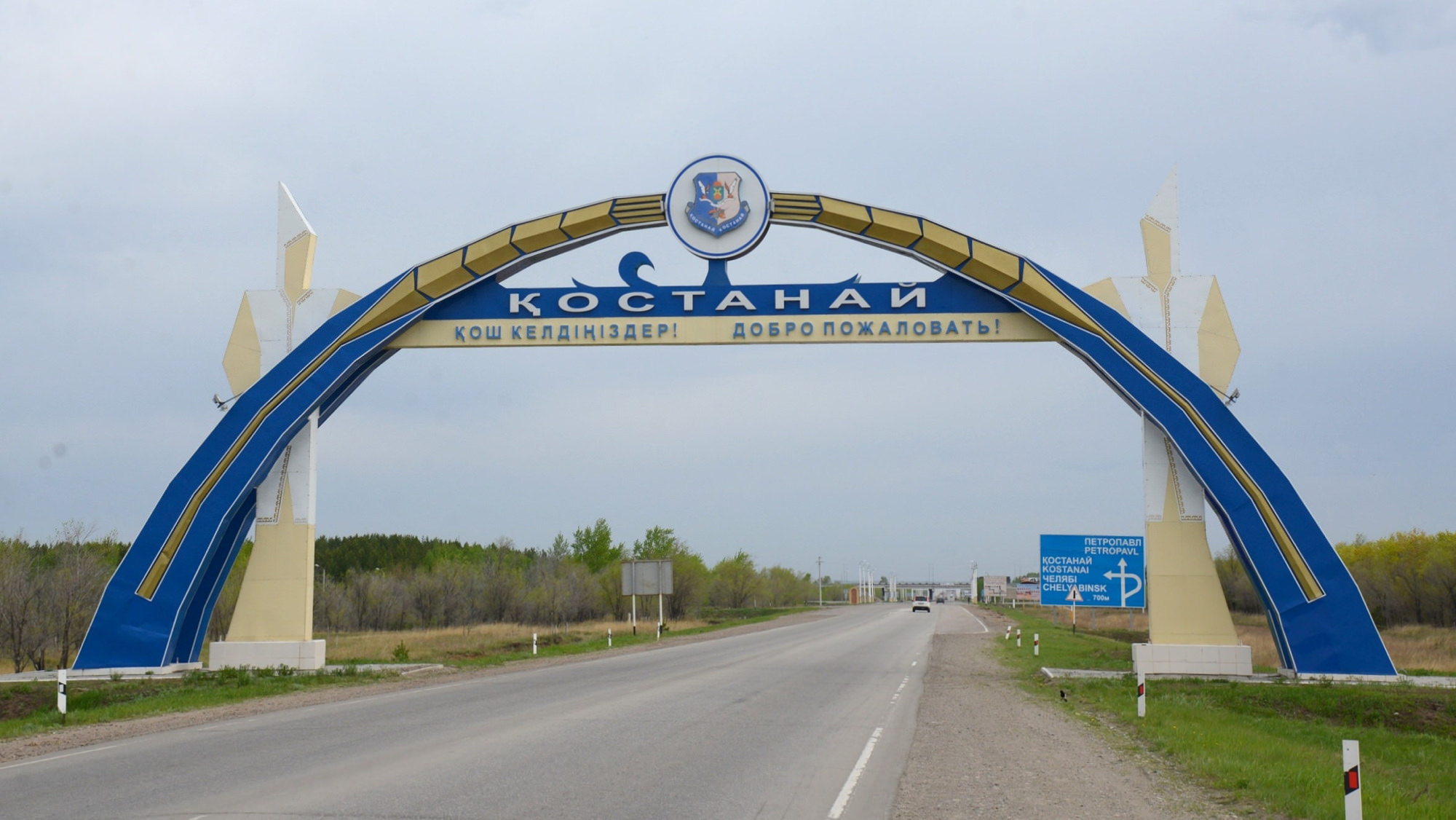
For January-June 2019, the region has seen a growth trend in the main indicators of the tourism sector. So, the volume of services provided by the placements amounted to 791,291 million tenge and increased by 5.1% compared to the same period in 2018.
For the 6 months of 2019, the services of accommodation facilities were used by 96,251 citizens of the Republic of Kazakhstan, an increase of 11.3% compared to the same period last year.
The number of foreigners increased by 7.7% and amounted to 9424 people.
For the comfortable accommodation of tourists, construction of new and reconstruction of existing tourism facilities is underway.
This year, 12 investment projects will be implemented in the hospitality industry, roadside services and health tourism for a total of 1.1 billion tenge, with the creation of 98 new jobs.
There is an information tourist bureau in the region (organization of excursions along tourist routes, implementation of tour packages), which has developed 30 tourist routes for the sights of the region.
Guides with knowledge of Kazakh, English and Chinese languages were prepared to serve residents and guests (42 people were trained).
Since 2018, in order to systematically develop inbound and domestic tourism, a Master Plan for the development of the tourism industry in the Kostanay region until 2022, as well as an Action Plan for the implementation and promotion of the Kostanay region as a tourist destination, have been implemented.
According to priority types of tourism, the Master Plan defines the main tourist cluster sites, which include:
In accordance with the Action Plan, it is planned to repair roads, install information plates, signs, build new and reconstruct existing tourism facilities and bring the necessary infrastructure to them.
In 2019, 10.3 million tenge was allocated from the regional budget for the development of the tourism industry.
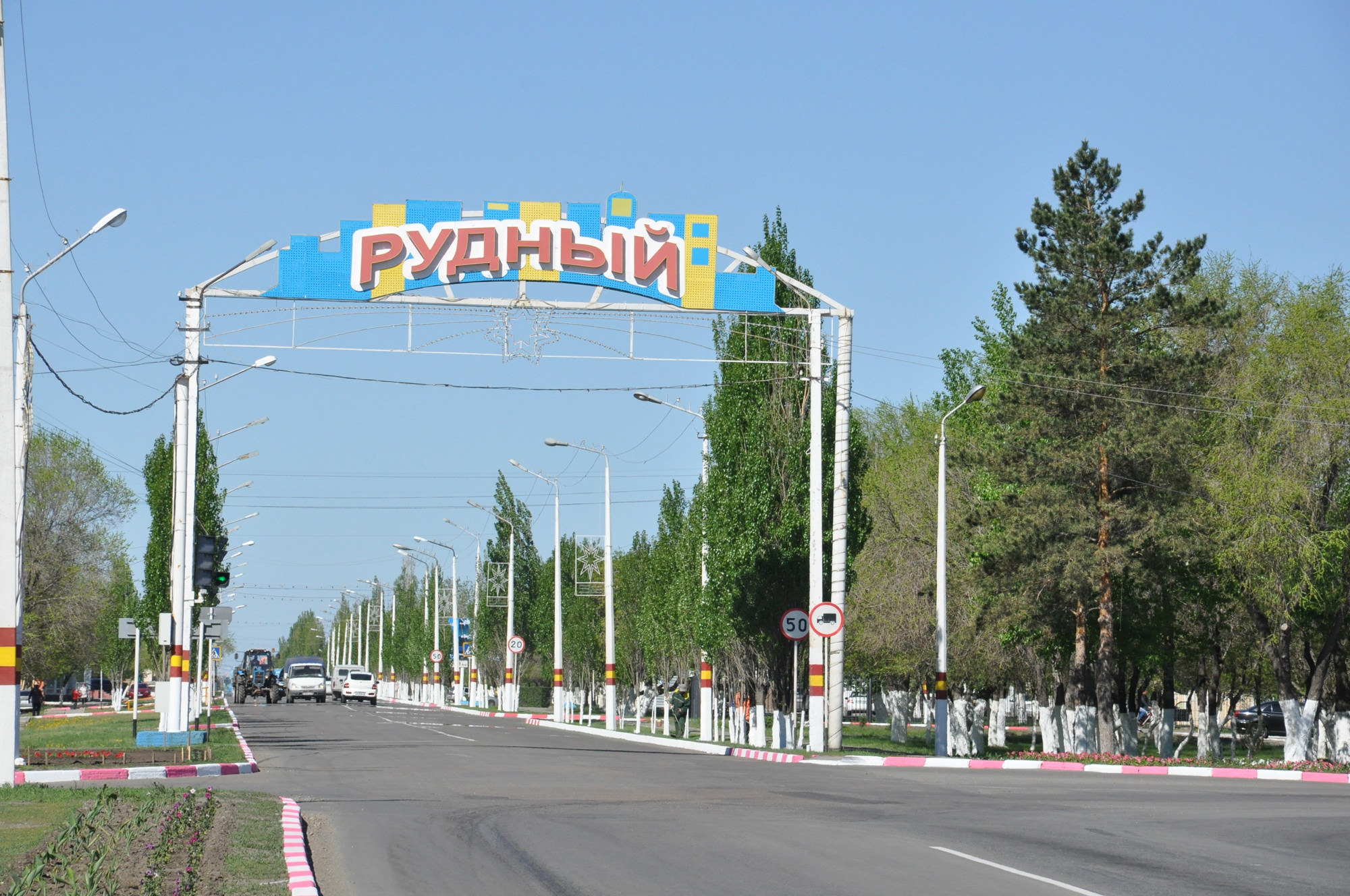
So, in the first half of the year, the delegation of the region took part in the international tourism exhibition KITF-2019 in Almaty.
To carry out active image-building work, the development and production of information-handout and souvenir products is constantly ongoing.
May 3, 2019, the II Regional Tourism Exhibition “Kostanay. Tourism 2019” took place.
Representatives of tourist organizations of the Kostanay region, regions of Kazakhstan (Akmola, Almaty, West Kazakhstan, Pavlodar, North Kazakhstan regions, Shymkent and Almaty) and border regions of the Russian Federation (Kurgan and Chelyabinsk regions) took part in the exhibition.
Within the framework of the exhibition, two memorandums of cooperation in tourism were concluded between the Kostanay region and the West Kazakhstan and Akmola regions.
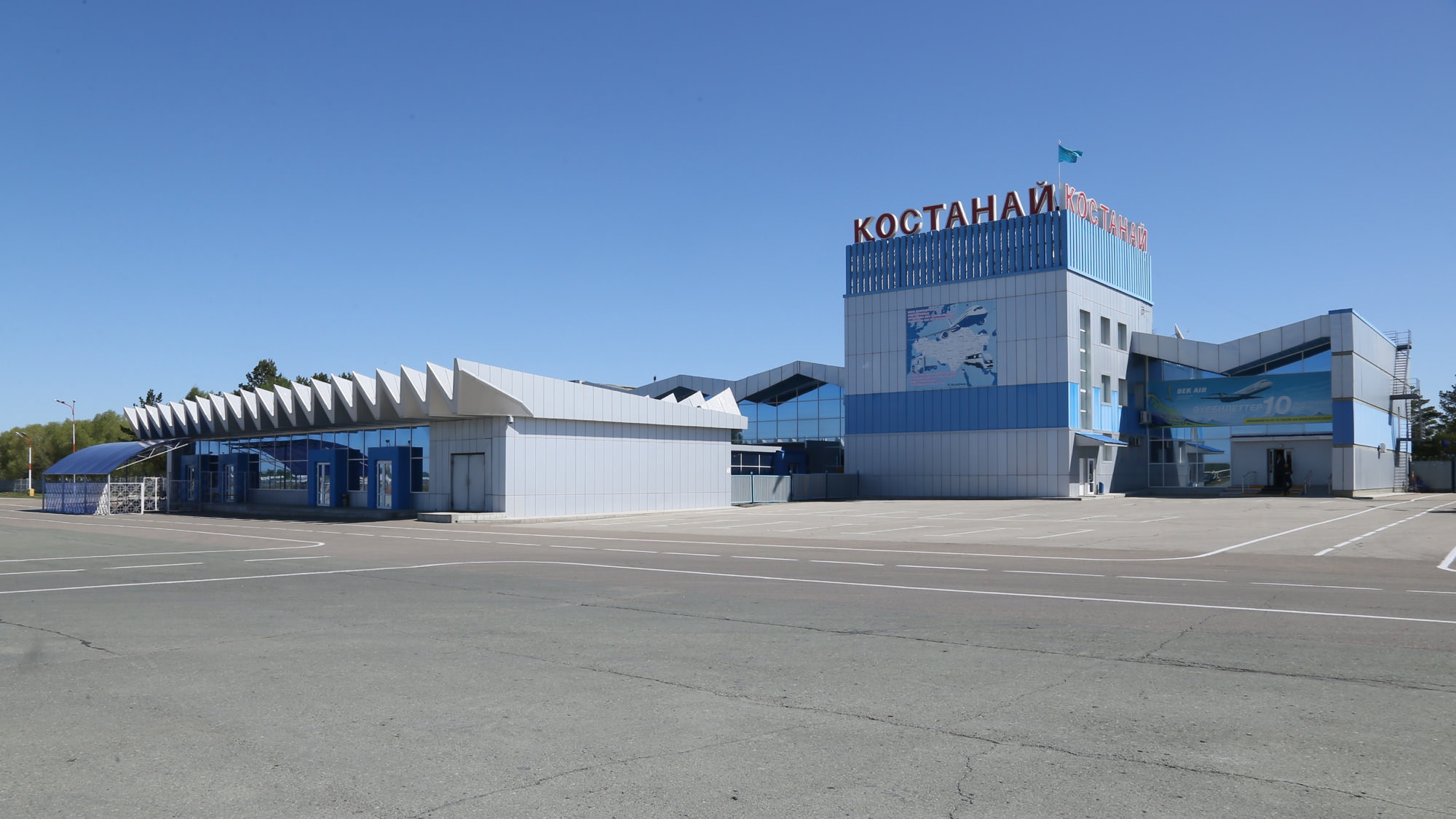
Also May 4, the information tour “Melody of the Great Steppe – Tulip Festival – Ainaldym Senen, Atamekenim” in Amangeldy district was held for representatives of tourist organizations in the regions of Kazakhstan and Russia. The grand opening of the festival began with kyu performed by 500 dombrists.
The participants of the information tour were shown the traditions and customs of the Kazakh people: performances in Audaryspaq, Qyz Quu, Tenge Alu, making kumys and tasting it, the opening of the Sheberler Auyly site and participation in master classes in craft art a tour of the sacred places of the district.
June 14, 2019, representatives of the Department of Entrepreneurship and Industrial and Innovative Development of the Akimat of the Kostanay Region took part in the opening of the tourist season in the Imantau-Shalkar resort zone of the North Kazakhstan Region. The purpose of the event is the development of domestic tourism, the promotion of tourist opportunities in the regions of Kazakhstan, the organization of an interactive platform for cooperation between the regions of the country.
Stay updated about the events of the Prime Minister and the Government of Kazakhstan - subscribe to the official Telegram channel
Subscribe